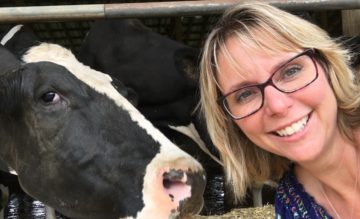Are You Ready for the Truth About Antibiotic Use? The Evidence Is In.
This post was originally published on February 15, 2020 and has been updated to reflect sales numbers from the FDA’s latest report (December 2020.)
For several years, an area of focus for those of us involved in farm animal care has been a commitment to the responsible use of antibiotics. Some called it window dressing. They said the commitments made by farmers, veterinarians and the animal health community to optimize the use of antibiotics on the farm would have little impact. Today, evidence suggests otherwise.
The Food and Drug Administration (FDA) released a report summarizing the sales of medically important antibiotics for agricultural use in 2019. There was a 25 percent decrease in sales from 2010, the second year of reported sales. The decline is even more significant when compared with 2015 – a 36 percent decrease according to the FDA report. That doesn’t sound like window dressing to me.
As we look at antibiotics sold year over year, there may be years where there are more or less, depending on the illnesses that can come and go, weather patterns, and changes in livestock populations. As I look to analyze whether the industry is making good on its commitment, my eye is firmly on continuous improvement over time, focusing on antibiotic stewardship through responsible use while maintaining animal health and well-being.
In addition, changes were instituted in 2017 that included ending the use of medically important antibiotics to promote animal growth and requiring stricter veterinarian oversight. Those who said it wasn’t enough have continued to call for more changes in antibiotic use and some advocate a complete ban. But, as the FDA report demonstrates, the agricultural community’s shared concern about antibiotic resistance led to a real commitment to responsible antibiotic use.
Can a person be too thin? On the surface, some would initially say no. But after further consideration, most would say there are, in fact, some serious health consequences associated with the extreme cases. Antibiotic use on the farm is quite similar. It is important to focus on responsible use, optimizing use and reducing the need for antibiotics rather than random target reductions. We should never consider reducing antibiotic use without considering other parameters such as animal health, animal welfare and mortality rates. For example, denying an animal an antibiotic when it is sick is not stewardship, but rather is a random reduction in antibiotic use that can contribute to animal suffering. We must be mindful of the unintended consequences of not using antibiotics when needed.
Health for Animals, the global animal medicines association, has created a Roadmap to Reducing the Need for Antibiotics, which includes member pledges regarding specific actions that will be taken to achieve the goals. “By better protecting animals from the threat of disease, identifying health issues earlier and treating them quickly and responsibly, we can decrease disease levels and with it, the need for antibiotics.” The website is listed on page 39 of this report as one of the commitments to engaging consumers on this important subject.
In order to reduce the need for antibiotics, farmers employ a whole range of tools to prevent disease that include vaccination programs, nutritional products, and advances in animal housing and biosecurity. As is often the case, there isn’t a single solution. There is a single commitment that leads to an array of solutions. The overall reduction in sales points to a commitment by farmers to use antibiotics responsibly. Said differently, a reduction in sales is one slice of the antibiotic stewardship pie.
This is an important conversation to have within the food system and I welcome your thoughts about it. If you’d like more information about how antibiotics are used on the farm, I invite you to read my past blogs which can be searched by topic here and watch videos found here, including a series I hosted on the topic.
As always, if you have any questions, please feel free to send me an email at AskDrDorman@pahc.com or call me at 844-288-3623. You can also browse our Resource Library to learn more about this important topic.

